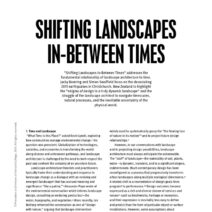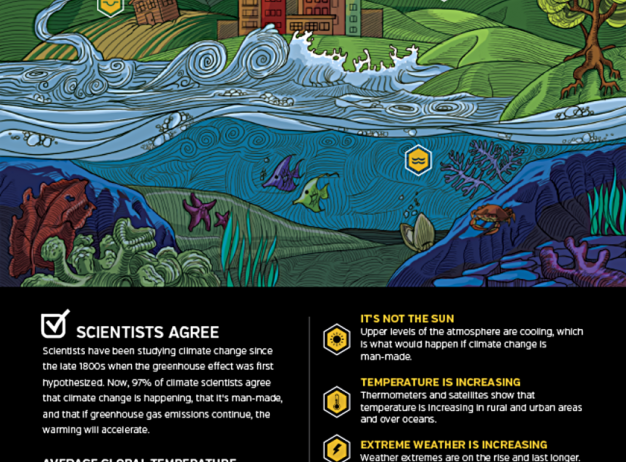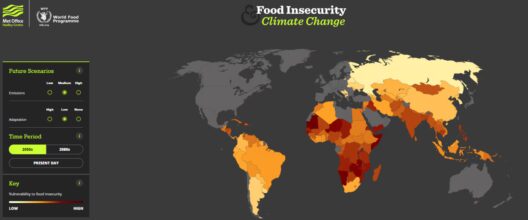The phenomenon of global warming has sparked myriad discussions within scientific circles and among the general populace. As temperatures continue to rise and extreme weather events proliferate, it prompts a pivotal question: How do we know that humans are predominantly responsible for this climatic upheaval? Occasional skeptics might wonder if there are factors beyond human influence that could be contributing to the intricate changes occurring in Earth’s climate system. Yet, a robust body of evidence elucidates the anthropogenic origins of recent climate variations, effectively debunking notions that downplay human responsibility.
To grapple with this issue, one must first comprehend the fundamental principles governing climate science. The Earth’s climate operates as a complex system, dictated by a multitude of variables ranging from atmospheric composition to oceanic currents. However, the most salient factor at play today is the augmented concentration of greenhouse gases in the atmosphere, particularly carbon dioxide (CO₂), methane (CH₄), and nitrous oxide (N₂O). The Intergovernmental Panel on Climate Change (IPCC), a reputable body within the scientific community, has published extensive reports correlating these emissions with human activities, especially through the combustion of fossil fuels, deforestation, and industrial processes.
Consider this playful observation: if humans had indeed played a negligible role in climate change, would we see such a pronounced correlation between the industrial revolution and the sharp rise in atmospheric CO₂ levels? The use of fossil fuels has burgeoned exponentially since the late 18th century. Ice core samples extracted from Greenland and Antarctica provide irrefutable evidence that this period marks an unprecedented spike in atmospheric greenhouse gas concentrations, aligning closely with human activity. Indeed, the geological record demonstrates that CO₂ levels during prior warming epochs occurred much more slowly than current rates, implicating human action as a critical catalyst in our contemporary climate crisis.
Moreover, to further substantiate the human connection, scientists often employ climate models. These sophisticated representations of Earth’s systems incorporate various variables that affect temperature. By simulating natural factors alone—like volcanic eruptions and solar output—researchers have found that these elements can account for only a fraction of the observed warming. In stark contrast, when human-induced factors are included, models accurately replicate the significant warming trend noted over the past century. This compelling juxtaposition illustrates that while natural forces remain influential, human activities are the predominant driver of climate change.
In the quest for clarity, another avenue of exploration involves the analysis of climate feedback mechanisms. When temperatures rise, several processes begin to unfold, amplifying the initial warming effect. A prominent example is the melting of polar ice caps, which reduces the Earth’s albedo or reflective capability. As darker surfaces absorb more sunlight, the planet becomes increasingly heated in a self-reinforcing cycle. Such feedback loops can escalate climate change rapidly, underscoring the urgency of addressing human-induced emissions before these effects spiral out of control.
Interestingly, the field of climate attribution studies offers insights into the frequency and intensity of specific weather events. Researchers leverage statistical analysis to discern the likelihood of extreme weather occurrences in a world influenced by human activity versus one where those influences are absent. For instance, studies demonstrate that heatwaves, which are becoming more frequent and severe, are far more likely due to climate change driven by human actions. The anthropogenic imprint on weather patterns is palpable and cannot be dismissed as mere coincidence.
While contemplating counterarguments is a critical aspect of any scientific discourse, those seeking alternatives to the human impact narrative often hinge upon natural climate variability. Indeed, the Earth has experienced natural climate fluctuations over millennia. However, the pace and scale of today’s changes starkly contrast with past events. The current trajectory of warming and the associated disruptions far exceed historical norms, leading many experts to assert that natural variability alone cannot account for the rapid changes we are witnessing today.
As we reflect upon the myriad facets of this urgent global issue, it becomes increasingly evident that collective human action is paramount for mitigating the adverse effects of climate change. The interdependency of ecological systems and human activities demonstrates our responsibility to enact policy changes, adopt sustainable practices, and foster a culture of environmental stewardship. We stand at a pivotal crossroads where the actions taken—or not taken—today will reverberate through generations to come.
In conclusion, the preponderance of scientific evidence strongly supports the assertion that humans are significantly responsible for global warming. From atmospheric composition studies to advanced modeling techniques, the data speaks with clarity and urgency. While the dialogue around climate change often wrestles with complexity and nuances, the mandate is unequivocal: acknowledging our role and implementing actionable solutions is essential for the preservation of our planet’s future. The challenge remains: will we rise to the occasion and embrace the necessary changes to safeguard our environment, or will we remain mired in complacency?




